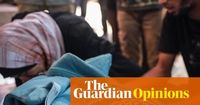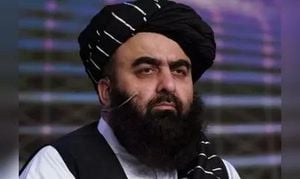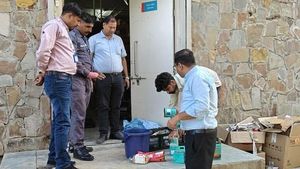In the shadow of relentless conflict, Gaza has become the world’s deadliest ground for journalists, a place where the pursuit of truth can—and often does—cost a reporter their life. Since October 7, 2023, the Israeli military campaign in the Gaza Strip has claimed the lives of at least 254 Palestinian journalists, according to the Government Media Office in Gaza. The deaths of journalists Sami Daoud and Yahya Mohammed Barzaq, announced on October 2, 2025, marked the latest additions to this grim tally, underscoring a crisis that has shaken the global media community to its core.
This staggering loss is unparalleled in modern journalism. The International Federation of Journalists (IFJ), a century-old organization, has never recorded such a high death toll among media professionals—not during World War II, Vietnam, or Syria. "Gaza has become the worst graveyard for journalists in contemporary history," wrote Anthony Bellanger, IFJ’s general secretary, in a recent reflection. The IFJ’s own monitoring found that 222 Palestinian journalists had been killed in the two years leading up to October 2025, with the toll only rising since.
The danger is no accident, many say. According to Bellanger, the killings are part of a deliberate strategy: "Kill the witnesses, close Gaza, lock down the narrative." With foreign journalists banned from entering the enclave, Palestinian reporters have become the sole eyes and ears of the world, often working without protection and at immense personal risk. Their work has become not only a testament to professional courage but also an act of defiance against efforts to erase the stories of Gaza’s people.
Australian human rights expert Chris Sidoti lauded these journalists as "models of heroism, of commitment to information, of all the things that the best journalism stands for." Speaking at the National Press Club of Australia, Sidoti emphasized the critical role Palestinian journalists have played: "In a situation where the Israeli authorities from day one have excluded foreign journalists, we have depended entirely on Palestinian journalists in Gaza to get information about what is happening." He praised their ability to provide verifiable video and photographic evidence, often at the cost of their lives.
Sidoti’s words echo a broader recognition in the media: that the actions of the Israeli government and military in Gaza are, in his words, "totally unacceptable." He noted a growing willingness among journalists worldwide to report more directly and candidly about the conflict, emboldened by the mounting evidence of atrocities. The United Nations commission, Sidoti pointed out, has found that genocide is occurring in Gaza—a charge that has fueled calls for accountability and protection for those bearing witness.
The risks facing journalists are not confined to Gaza alone. Sidoti described the "enormous pressure" faced by Australian reporters covering the conflict. He recounted conversations with journalists who, fearing repercussions, hesitated to publish information or even seek it out. "There's plenty of fear around," he remarked. The chilling effect of such pressures was highlighted by a recent court ruling in Australia: in September 2025, a federal judge ordered the Australian Broadcasting Corporation to pay journalist Antoinette Lattouf additional compensation after she was fired over a social media post about the Gaza war. The court found that the ABC had bowed to the "pro-Israeli lobby," a decision that sent ripples through the journalistic community.
For those on the ground in Gaza, the reality is even more harrowing. The IFJ notes that Palestinian journalists often work without even the most basic protections. The siege conditions have left families trapped and vulnerable, with no refuge from the violence. The murder of young Al Jazeera reporter Anas al-Sharif on August 10, 2025, became emblematic of the dangers faced by those who dare to report from within the enclave. As Bellanger wrote, "Anas al-Sharif did not want to die. He wanted to inform the world, in safety. His death, and that of our 222 colleagues compels us to act."
The IFJ has responded by supporting journalists and their families through its International Safety Fund and by advocating for a binding international UN convention to protect journalists and punish their killers. The organization’s call is clear: until such protections are in place, impunity will reign, and those responsible for these crimes will remain shielded from justice. The IFJ’s mantra—"No story is worth a human life"—serves as both a warning and a rallying cry. Journalists, the organization insists, should not be martyrs; their mission is to report, not to die.
The silence of major powers and the paralysis of international institutions have only deepened the sense of abandonment felt by Gaza’s journalists. While the recognition of Palestinian statehood by more countries at the United Nations carries symbolic weight, it does little to protect those still at risk or to deliver justice for the dead. "Diplomacy is catching up with history, but only after the irreparable has been done," Bellanger observed.
Some argue that the targeting of journalists is part of a broader strategy to control not just the territory, but the narrative itself. With Prime Minister Benjamin Netanyahu vowing to "recolonise" Gaza, the erasure of witnesses—both the living and the dead—serves to obscure the reality of the conflict. The IFJ warns that accepting the murder of journalists as a normal instrument of war sets a dangerous precedent for regimes worldwide. "Killing journalists is killing the truth. And a world without truth is a world where executioners reign supreme," Bellanger wrote.
Despite the mounting evidence and the outcry from international organizations, the killings continue. The Government Media Office in Gaza has called on the International Federation of Journalists, the Federation of Arab Journalists, and all journalistic organizations to condemn what it describes as "systematic crimes" against media professionals. It has urged "serious and effective pressure" to halt the killings and protect those still reporting from the front lines.
The collective responsibility to safeguard journalists has never been more urgent. Every helmet, every bulletproof vest, every safety training session is a lifeline. Yet, for many in Gaza, these basic protections remain out of reach. The evidence and testimonies pile up, but change seems elusive. Still, as Bellanger reminds his colleagues, giving up would be worse: "Silence is a victory for the executioners. It allows them to say that nothing happened."
The story of Gaza’s journalists is one of extraordinary courage and profound loss. Their work, conducted under siege and amid unimaginable risk, has ensured that the world cannot look away. But the price they pay is staggering, and the question remains: who will protect the witnesses when the world’s attention moves on?




